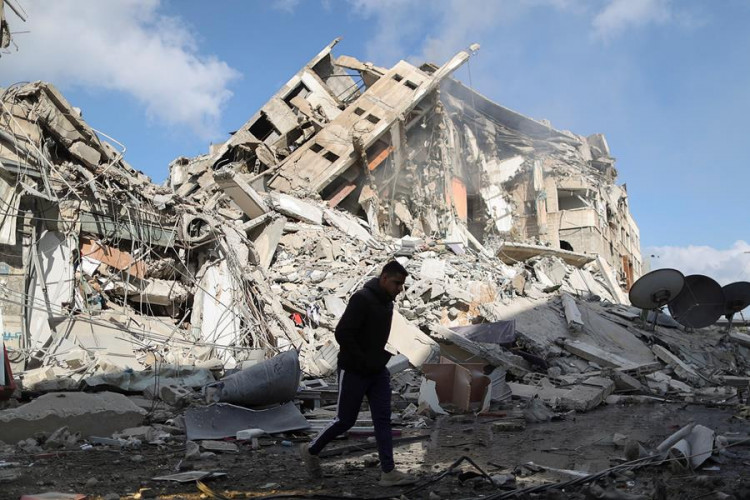The four-day ceasefire agreement reached between the Israeli government and the Palestinian Islamic Resistance Movement (Hamas) entered its second day on November 25. Both sides have ceased all military actions and are exchanging hostages. This development comes after six weeks of renewed conflict between Israel and Gaza, which has now temporarily returned to calm.
Israel received the first batch of 13 Israeli hostages released by Hamas on the night of November 24. Among them was 5-year-old Emilia Aloni, who had been held for 49 days and has now been reunited with her grandmother. A large crowd gathered outside the Schneider Children's Medical Center in Tel Aviv, applauding the return of their compatriots.
Additionally, 11 foreign nationals who were released alongside the Israelis have returned to Israel. Of the total 239 individuals from Israel held by Hamas in the Gaza Strip, 215 are still awaiting release. The process for releasing the second batch of hostages is underway.
Under the agreement, Hamas is to transfer the hostages to the Red Cross, which will then accompany them to the Egyptian border. From there, they will be transported by Israeli military helicopters to hospitals for initial medical checks and to make phone calls to their families.
Meanwhile, 39 Palestinian individuals previously detained by the Israeli military have also been released. Israel has agreed that for every 10 additional hostages released by Hamas, the ceasefire can be extended by one day. U.S. President Joe Biden has called this a "positive start."
Following the ceasefire's commencement at 7 a.m. on November 24, residents of Gaza began moving around in some areas of the Gaza Strip. However, the Israeli military prevented some Palestinians from returning to their homes in northern Gaza, a focal area of the Hamas-Israeli military conflict.
At the same time, the United Nations has expanded its scale of humanitarian aid deliveries to the Gaza Strip. A convoy of 200 trucks was sent to the Rafah crossing point, marking the largest humanitarian aid convoy since October 7. Additionally, 129,000 liters of fuel and four gasoline trucks entered Gaza, providing hundreds of thousands of people with food, water, medical supplies, and other humanitarian essentials. The World Food Programme also sent over 100 trucks loaded with approximately 1,300 tons of food into the Gaza Strip.
On October 7, Hamas launched a military operation code-named "Al-Aqsa Flood" against Israel, firing thousands of rockets into Israeli territory, resulting in approximately 1,200 deaths in Israel. Israel subsequently declared a state of war and initiated "Operation Iron Sword" targeting Hamas in the Gaza Strip. To date, 14,854 individuals have died in the Gaza Strip, two-thirds of whom are women and children.
To fully halt the current conflict, various governments and civilian forces, including families of hostages, have increased pressure on the Israeli government. South Africa hosted an online summit of BRICS nations' leaders, calling for an immediate ceasefire between Israel and Palestine. A delegation of officials from Muslim countries has been visiting the five permanent members of the United Nations Security Council in rotation.
With mediation by Qatar, Egypt, and the United States, Hamas and Israel reached their first temporary ceasefire agreement earlier this week. Media outlets like CNN have described this as a "significant diplomatic breakthrough." However, Israeli Prime Minister Netanyahu emphasized that the fight against Hamas is not over and that military operations in the Gaza Strip will continue.






